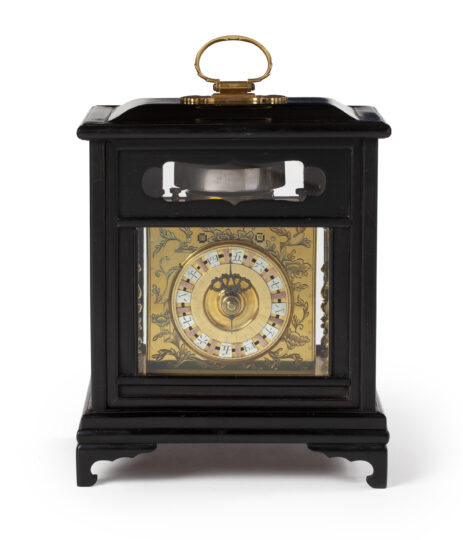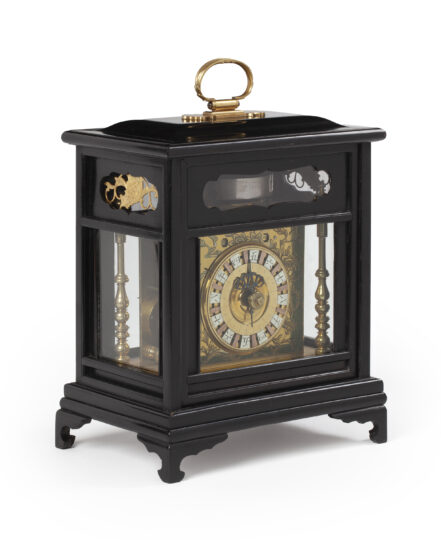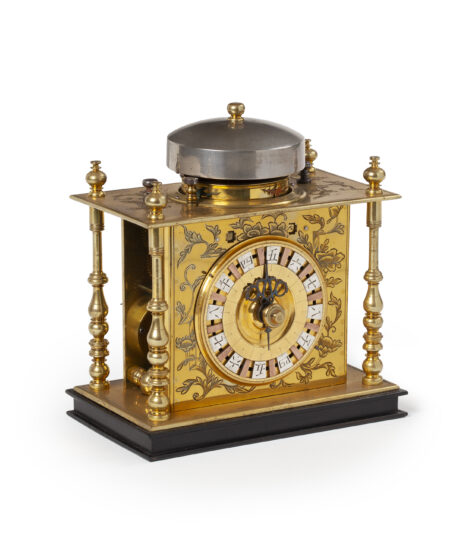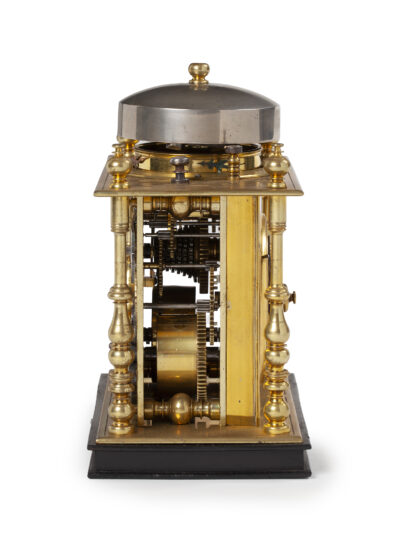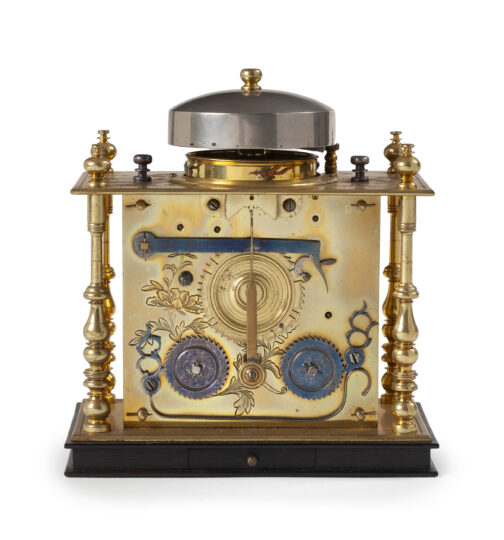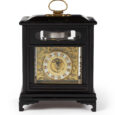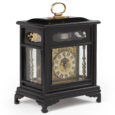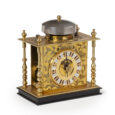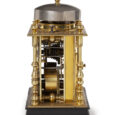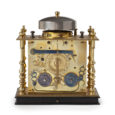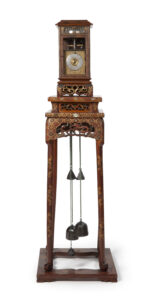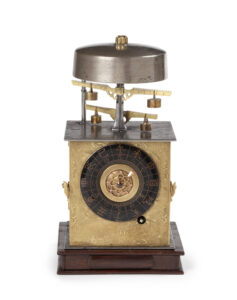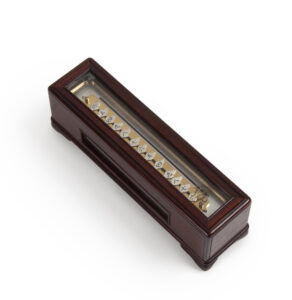JAPANESE TABLE CLOCK, ‘MAKURA DOKEI’ WITH STRIKING AND CAROUSSEL Ca. 1850
M&R21
JAPANESE TABLE CLOCK, ‘MAKURA DOKEI’
WITH STRIKING AND CAROUSSEL
Circa 1850
Japan
Movement
The spring-driven chain-fusee movement is situated in a beautifully engraved housing and consists of going and striking trains. The going train has a chain fusee and a verge escapement with a short pendulum. The striking train is regulated by a countwheel and indicates the hours from 9x to 4x on a bell. The half hours are indicated alternatingly by one or two strokes. The carousel of 4 miniature sawn dragons is visible on the top plate, which is moving by going train. The movement is wound from the front and the back.
Dial
The elaborately flower-engraved brass dial has a revolving chapter ring. It is divided into twelve silver chapters for day and night time indication and twelve copper unmarked chapters for the half hours. A Japanese hour equals two European hours, the hours running from nine to four. The pierced blued brass hand is fixed whilst the chapter ring turns.
Case
The brass movement is constructed between bars, enclosed by brass top and bottom plates, connected by four finely shaped pillars, surmounted by a pork-pie bell. The whole movement fits in a ebonise wooden case, glazed on all sides so that the movement is entirely visible. There are three sound apertures at the top of the case, two beautifully open worked and engraved as a bird. There is a slide at rear side of the case, which allows the removal of the movement. Under the brass bottom plate is a drawer for the winding key. The front can also be slid up to give access to the dial and adjust the hour chapters. There are two apertures showing the date and the sign of the zodiac. The case is surmounted by a profiled brass carrying handle.
Duration 1 day
Height 24 cm
Width 16.5 cm
Depth 12 cm
Literature
– N.H.N. Mody, Japanese Clocks, Rutland, 1977
– W. Brandes, Alte Japanische Uhren, München, 1976
– Tardy 3-part, La Pendule Française JAPON, p.757-768.
Note
Japanese time measurement is very different from its counterpart in the Western world. Instead of a fixed value for an hour the length of an hour in Japan, called toki is variable depending on the length of the day and night. Day and night are both divided into six toki, which lasts from sunrise to sunset and from sunset to sunrise. In summer the days are longer than the nights and consequently a day toki last longer than a night toki. In winter it is the other way around. This is the reason why Japanese clocks have sliding chapters to adjust the length of a toki. There are also clocks with a fixed chapter ring and a revolving hand. To regulate the lengths of the toki the weights on the foliot can be moved, which makes the clock go faster or slower. The hour numerals run from nine to four, the latter being midday. Japanese clocks indicate how many hours there are to come, whilst European clocks indicate how many hours have past. In Japan the figure 9 was holy. Each toki, twelve in total, also had its own sign of the zodiac, which were sometimes indicated on a ring around the chapter ring.

